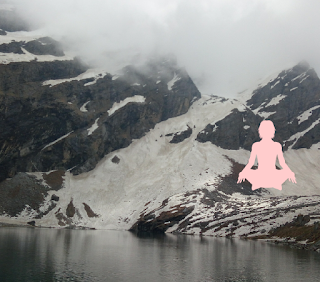Vriksh Asana: how to do step by step | Benifits
Vriksh asana- is one of the most
important and balancing asana, where the hands make contact with the ground
while the body is completely reversed and the flow of blood goes towards the
head, hands and shoulders which brings immense benefits. It is one of the most
beneficial asanas’ for both the body and mind, by reversing the normal effects
of gravity it enhances blood circulation in the body, improves the sensory
faculties and provides concentration, memory and longevity. Every nerve of the
body is closely connected with the brain and twelves pairs of cranium nerves
proceed from both hemispheres through the skull to the entire body hence being beneficial.
Vriksh asana is a little difficult to perform for beginners but after a few
days of practices one will easily be able to do it.
A person is considered to be
healthy when three elements of the nature such as kapha-pita-Vayu are in
equilibrium in the body as mentioned in ancient Ayurveda. The body would be in
complete harmony when kapha-pita-Vayu are balanced and start the process of
evacuation and elimination of waste as normal while keeping the body full with
prana Vayu which results in perfect harmony in the mind and consciousness. Vriksh
asana and shirsha asana, both reverse the body and make the flow of the blood
go towards the head, shoulders, hands and chest. Both asanas make the body
strong and flexible. Vriksh asana like the scorpion, taming the whole body in
perfect coordination with the mind, body and soul as well as rejuvenating
entire body within a few minutes. This asana strengthen the spine, brain and
shoulders and keeps you away from any diseases.
The brain, a major organ, the
part of the central nervous system enclosed in the cranium of man and other
vertebrates. The brain is a convoluted mass of nervous tissues that is made up
of soft grey and white matter which is serving to control and coordinate the
mental and physical actions. The three membranes’ which surround the brain are
·
Dura
matter- the tough, fibrous membrane forming the outermost of the three
coverings of the brain and spinal cord,
·
Pia
matter- the connective tissue containing a network of blood vessels which
nourishes all parts of the brain
·
Arachnoid-
resembling a spider’s web and belonging to the arachnids
Below the arachnoid there is space
that contains the cerebrospinal fluid which protects the brain from any injury,
a fine membrane around the brain. Cerebrum, cerebellum, medulla oblongata and
Pons varolii are the four sections of the brain.
The cerebrum, which consists of
the right and left cerebral hemispheres joined by the corpus callosum, is the
place of most conscious and intellectual activities; and, shirsha asana
stimulate blood circulation and as more blood is supplied to the brain
particularly the forehead, pituitary and
pineal glands, the whole brain gets sufficient prana energy. Shirsha asana
refreshes the cardiovascular and lymphatic system which allows prana energy to
flow to the third eye and exhibits strength as well as balancing the others
hormones in the body too.
Vriksh asana:
Stand straight and breath in.
Bend forward keeping palms flat
on the ground keeping some distance between them, one foot apart
(shoulders-width apart).
Keeping elbows straight and lean
forward.
On an inhalation and push your
one leg up over head and swiftly the momentum will carry the other leg too up
after it and help you balance on both hands on the ground.
So, raise your legs and waist up to
balance full weight of the body on hands and make sure you keep your arms
straight.
Stretch your legs up so that your
toes pointing upward.
Let your body to be straight.
Make sure hands are in a fixed position.
Remain in this position for half
minute.
Bring the legs down slowly.
Bring legs back down slowly
without any sudden jerks and the head should remain in the air without putting
any pressure or sudden movements.
Lie down on the ground and relax
in child pose or shav asana for few
minutes.
Beginners are advised to do vriksh asana against a wall to avoid the
danger of falling.
Benefits:
Vriksh asana stimulates blood
circulation and as more blood is supplied to the brain, it cures hairs problem
whether falling problems or changing its colours. Vriksh asana is beneficial
for the eyes, sense organs and strengthening all organs in the body including
the arms and shoulders as well as making them flexible and in fact useful for
celibacy.
Precaution:
Harmful when it is not practiced
properly. Harmful for those having high blood pressure, glaucoma, weak heart,
detached retina and overweight. In hot days, it should be done just a few
seconds, if temperatures soar to 40 degrees then avoid it. If you feel
giddiness avoid it. You can do more in
the winter or as per of your stamina. For women, should this be avoided when menstruating?



Nice👌👍
ReplyDeleteVery nice
ReplyDeleteNice
ReplyDeleteBeautiful knowledge
ReplyDelete